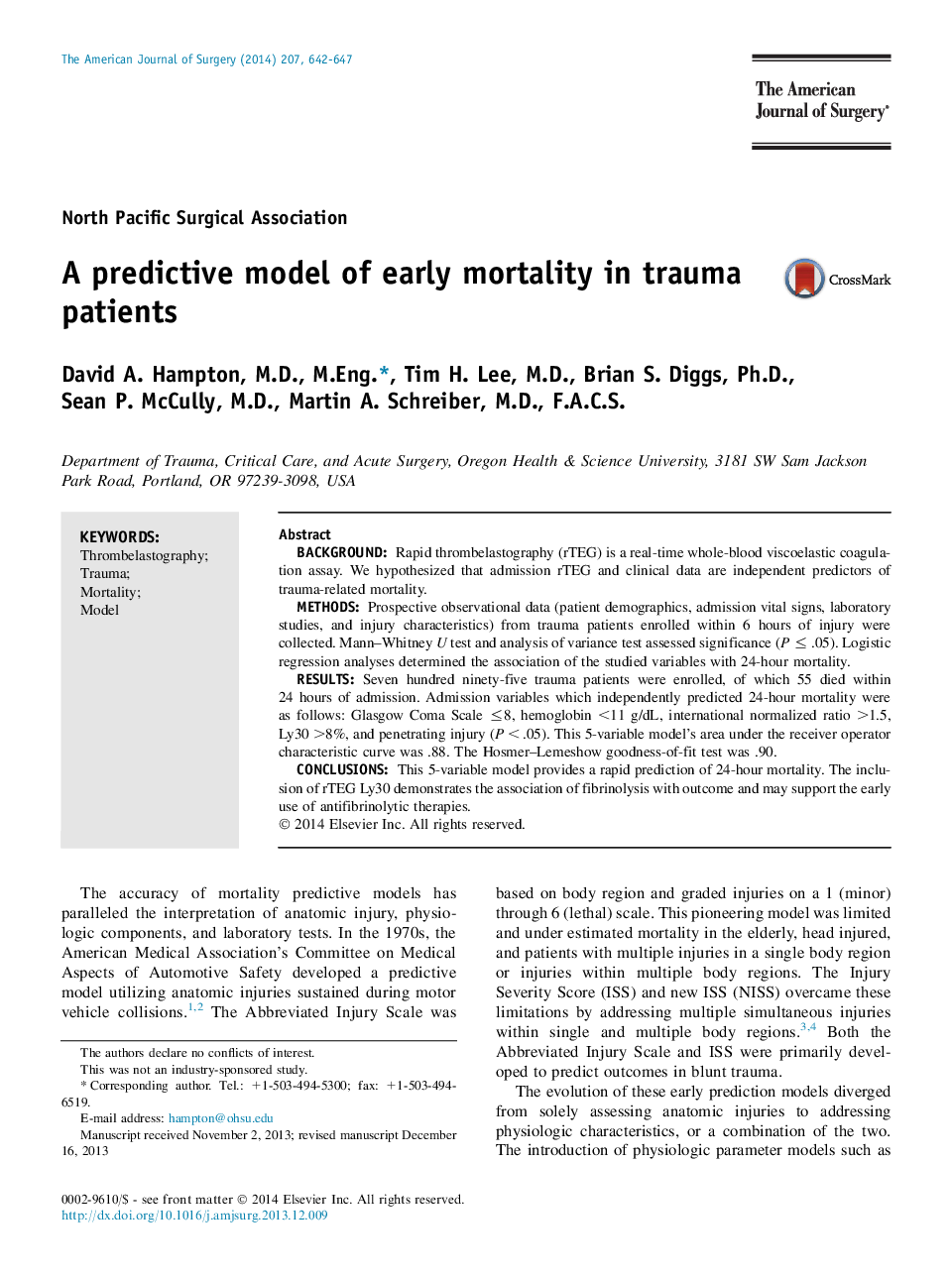| Article ID | Journal | Published Year | Pages | File Type |
|---|---|---|---|---|
| 4278756 | The American Journal of Surgery | 2014 | 6 Pages |
BackgroundRapid thrombelastography (rTEG) is a real-time whole-blood viscoelastic coagulation assay. We hypothesized that admission rTEG and clinical data are independent predictors of trauma-related mortality.MethodsProspective observational data (patient demographics, admission vital signs, laboratory studies, and injury characteristics) from trauma patients enrolled within 6 hours of injury were collected. Mann–Whitney U test and analysis of variance test assessed significance (P ≤ .05). Logistic regression analyses determined the association of the studied variables with 24-hour mortality.ResultsSeven hundred ninety-five trauma patients were enrolled, of which 55 died within 24 hours of admission. Admission variables which independently predicted 24-hour mortality were as follows: Glasgow Coma Scale ≤8, hemoglobin <11 g/dL, international normalized ratio >1.5, Ly30 >8%, and penetrating injury (P < .05). This 5-variable model's area under the receiver operator characteristic curve was .88. The Hosmer–Lemeshow goodness-of-fit test was .90.ConclusionsThis 5-variable model provides a rapid prediction of 24-hour mortality. The inclusion of rTEG Ly30 demonstrates the association of fibrinolysis with outcome and may support the early use of antifibrinolytic therapies.
